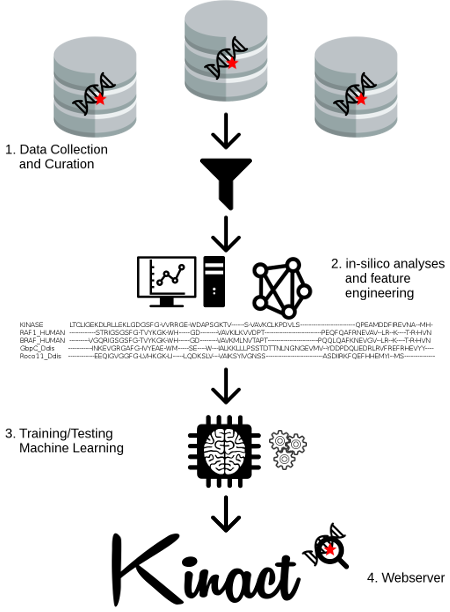Kinact a computational approach for predicting activating missense mutations in protein kinases
Abstract: Protein phosphorylation is tightly regulated due to its vital role in many cellular processes. While gain of function mutations leading to constitutive activation of protein kinases are known to be driver events of many cancers, the identification of these mutations has proven challenging. Here we present Kinact, a novel machine learning approach for predicting kinase activating missense mutations using information from sequence and structure. By adapting our graph-based signatures, Kinact represents both structural and sequence information, which are used as evidence to train predictive models. We show the combination of structural and sequence features significantly improved the overall accuracy compared to considering either primary or tertiary structure alone, highlighting their complementarity. Kinact achieved a precision of 87% and 94% and Area Under ROC Curve of 0.89 and 0.92 on 10-fold cross-validation, and on blind tests, respectively, outperforming well established tools (p < 0.01). We further show that Kinact performs equally well on homology models built using templates with sequence identity as low as 33%.
